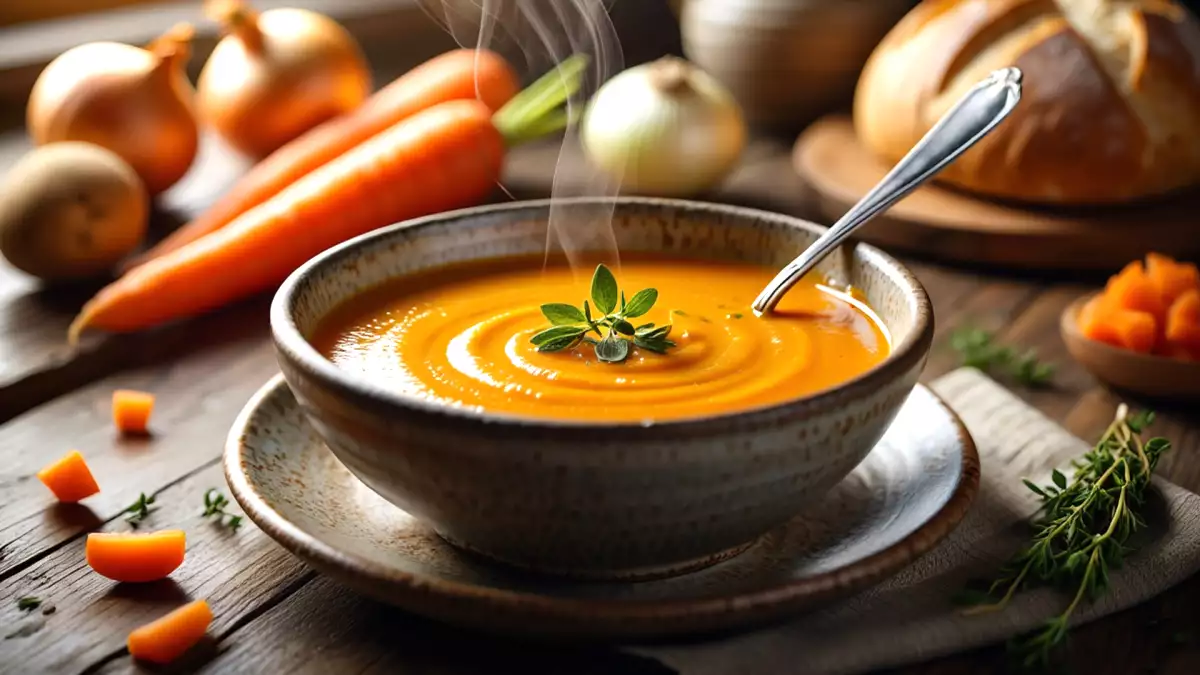Don’t toss that watery soup: chefs use these fast tricks to save it without losing flavor

It happens to everyone: you're making a creamy, fragrant soup, but when you lift the ladle you realize...it's more broth than velouté. A consistency that is too runny can ruin even the most flavorful recipe, but the good news is that there are plenty of ways to make up for it without compromising taste and nutrients. According to Italian nutritionist and chef Alessandra Piva, "Soups are among the most complete and healthy dishes, but their success depends a lot on the balance of liquid, fiber, and ingredients. Adjusting the consistency is a matter of technique, not luck."
So let's see how to correct a soup that is too liquid, with practical tips and tricks from great chefs.
1. The easiest method: shrink it over the fire.
The first solution is also the most natural: let the excess water evaporate. Simply put the soup back on the stove, over medium-low heat, and let it simmer without a lid for 10-15 minutes. This way the liquid gradually evaporates and the consistency thickens evenly.
This method is perfect for legume soups, vegetable soups and velvety soups. Be careful not to overcook, however, lest the ingredients lose their freshness and color.
Italian Star chef Carlo Cracco explains that "reducing a soup is like concentrating an emotion: the more it cooks, the more aromas and flavors are amplified."
2. Add natural thickening ingredients
If you are short on time or the soup is already cooked, you can thicken it with natural ingredients that perfectly complement the flavor of the dish.
Here are some effective options:
- Potato or pumpkin: rich in starch, you can mash them and add them to the soup for a creamy texture.
- Stale bread: a traditional peasant trick. Just soak a few pieces of bread and let it slowly melt.
- Rice or short pasta: perfect for soaking up excess liquid. Add them and let them cook a few minutes longer.
- Hulled red lentils: great for adding body and a rustic touch, they cook in just 10 minutes.
- Blended legumes: if you have beans or chickpeas already cooked, blend some and add it to the soup.
According to Italian cook and food coach Luisa Orsini, "vegetable starches are the secret to saving a watery soup: they not only improve texture, but also increase fiber and satiety."
3. The chef's trick: use "smart" thickeners.
In the professional kitchen, chefs often use natural thickeners to control the texture of liquid dishes. Among the most commonly used:
- Maizena (cornstarch): dissolve it in a little cold water and add it at the end of cooking, stirring until the desired density is achieved.
- Rice flour or potato starch: ideal for creams and light creams. One or two teaspoons are enough.
- Oatmeal: great in vegetable soups, giving body and a light velvety effect.
- Tahina or peanut butter: a creative solution for ethnic or spicy soups, adding creaminess and a gourmet touch.
Italian michelin-starred chef Enrico Bartolini suggests "dosing thickeners with balance: they should accompany the soup, not dominate it. The perfect texture is one that caresses the palate without weighing it down."
4. Playing with temperature and presentation
Sometimes you don't need to change the recipe, just play with temperature and service.
A soup served hot will seem thicker than one served lukewarm, because heat amplifies the viscosity. Also, serving the soup in soup bow ls rather than in wide bowls helps give a fuller perception.
You can also complement the dish with toppings that add texture:
- whole-wheat bread croutons,
- toasted seeds (pumpkin, sesame, sunflower),
- a drizzle of extra virgin olive oil or a sprinkling of Parmesan cheese.
5. Last minute tricks (even for beginners)
If the soup is already ready and guests are about to arrive, here are some emergency tricks:
- Pour some of the soup into a blender with a few tablespoons of legumes or bread, then reincorporate.
- Add a couple of tablespoons of instant mashed potatoes: quick, neutral and perfectly blendable.
- If it's a velouté, let it cool slightly before blending: the texture will be thicker and silkier.
The secret is balance
Making an overly liquid soup creamier is not just a matter of technique, but of harmony between taste, nutrients and texture. As chef and nutritionist Monica Bianchi reminds us, "a well-made soup should be neither brothy nor heavy. It must envelop the palate, warm the soul and be good for the body.". With a few targeted gestures and a dash of creativity, even a bad soup can be transformed into a restaurant dish that is nutritious, balanced and full of flavor.
 Daniele Mainieri
Daniele Mainieri
Comments